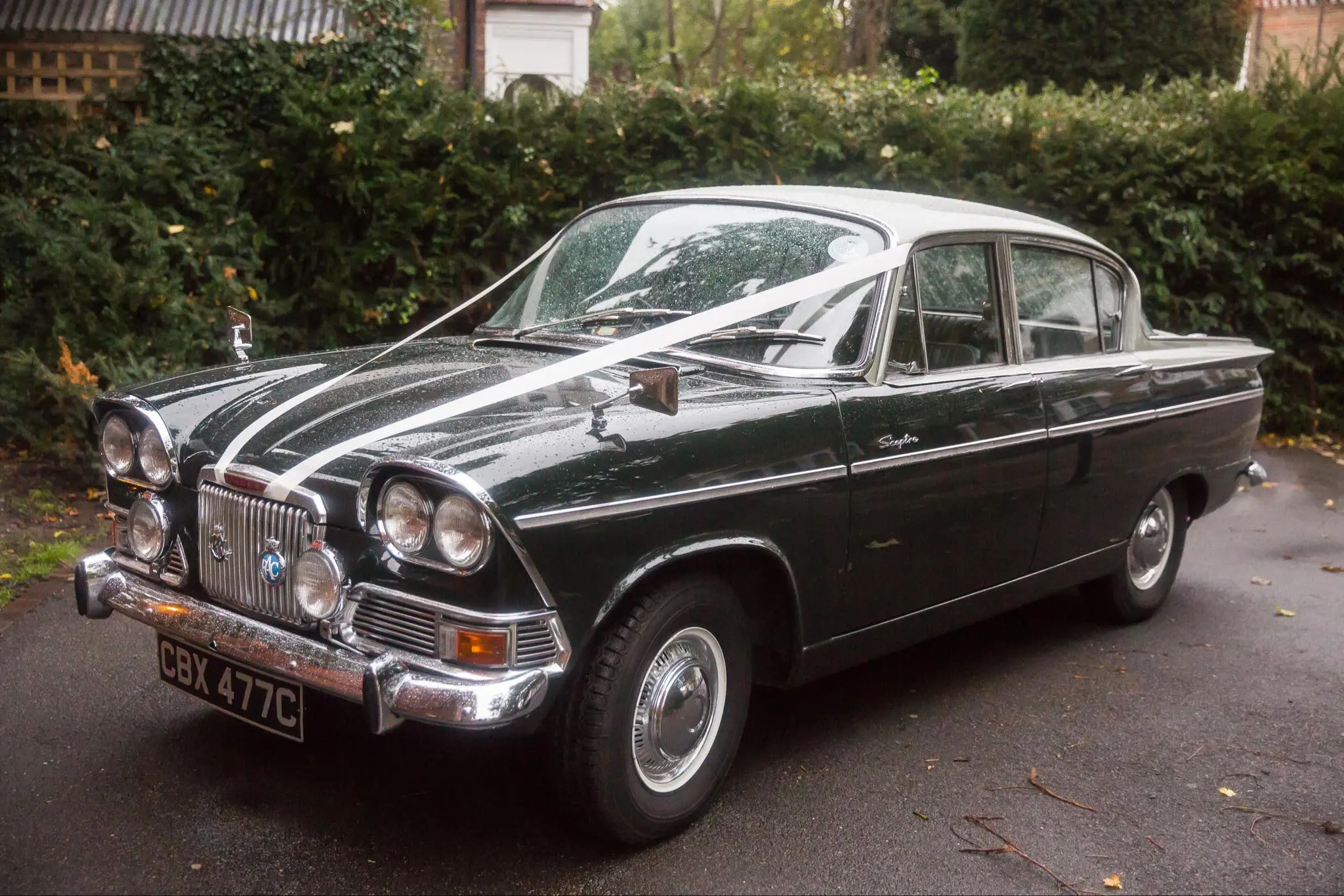Meet the Owner - Nicholas Harries and his Humber Sceptre
12 May 2022
When the Rootes Group unveiled the Humber Sceptre in 1963, they modestly proclaimed “Never before has there been a car so superbly equipped…with such performance…at so modest a price.” Nicholas Harries’s magnificent 1965 Sage Green/Velvet Green example is a one-family-from-new car. “I’ve known her since I was born and love her to bits”, he said. “I have had her since my grandfather died in 1985 and learnt to drive in her.”
The origins of the Sceptre date back to the Rootes’ plan to replace their Audax range. The Hillman Super Minx and the Singer Vogue would succeed the Minx and the Gazelle by the Vogue, respectively. As for the Sunbeam, the Rapier Series IV would sport distinctive four-door bodywork. However, management decided these new models would supplant, rather than replace, the Minx and Vogue. The Hillman and Singer made their bows in 1961, and in early 1963, the former Rapier heir emerged with Humber badging (but a Sunbeam-style grille) as the Sceptre.

The familiar 1.6-litre 4-cylinder engine powered the first post-war compact Humber, while the styling was just the right side of the flamboyant/Flash Harry Rubicon. Rootes aimed the Sceptre at the sort of motorist who regarded the Vauxhall VX 4/90 FB as a tad “wide boy made good” and the MG Magnette Mk. IV and Riley 4/72 as somewhat middle-aged. It also appealed to the former Rapier owner, who now needed an extra pair of doors.
William Boddy of Motor Sport thought the Sceptre remarkable value at £997 8s 9d “for such a good, well-turned-out, high-performance family car”. Autocar noted that only a few months after launch, “the small Humber is already a commercial success” and The Motor found it to be “fast, sturdy, notably comfortable and very well equipped”.
By 1964, Rootes upgraded the Sceptre’s list of standard fittings, and so Nicholas’s Humber boasts adjustable steering, overdrive, reclining front seats, quad headlamps and, reversing lights. There is also full instrumentation and a cigar lighter, plus a fresh air vent in the driver’s footwell, as also found in the Super Minx and Vogue.
The autumn of 1965 saw the introduction of the face-lifted Mk 2 with new frontal treatment and a twin carburettor 1,725cc engine. Motor approved the 94.8 mph top speed but thought the typical Humber driver would “leave his string-back gloves behind”. By the time of the Arrow Series Sceptre in late 1967, the tail-finned original model seemed redolent of the recent past as a 32-year-old Teddy Boy.
Nicholas finds his Mk. I to be “quite sprightly; altogether pretty taut for her age. But then, she’s always been well looked after and maintained.” Over the years, he has carried out several improvements such as fitting an alternator and Weber carburettors but has always retained the original parts.
He adds: “Four years ago, I had a major overhaul (done by Rees Bros) and turned the clock back - overhauling and refitting the original parts. I do quite a bit of work myself, but bodywork is beyond my meagre talents.”
Since then, Mr. Harries has undertaken a few more jobs: ‘restoring the original toolkit and Clearhooter horns etc..’. The public’s reaction is “universally positive - smiles and comments; questions about her age, what I paid for her etc. I take great satisfaction in telling them that my grandfather bought her new in 1965”. Such responses are entirely appropriate for the Humber with ‘everything you have wanted in a medium-sized saloon’.
With thanks to: Nicholas Harries
